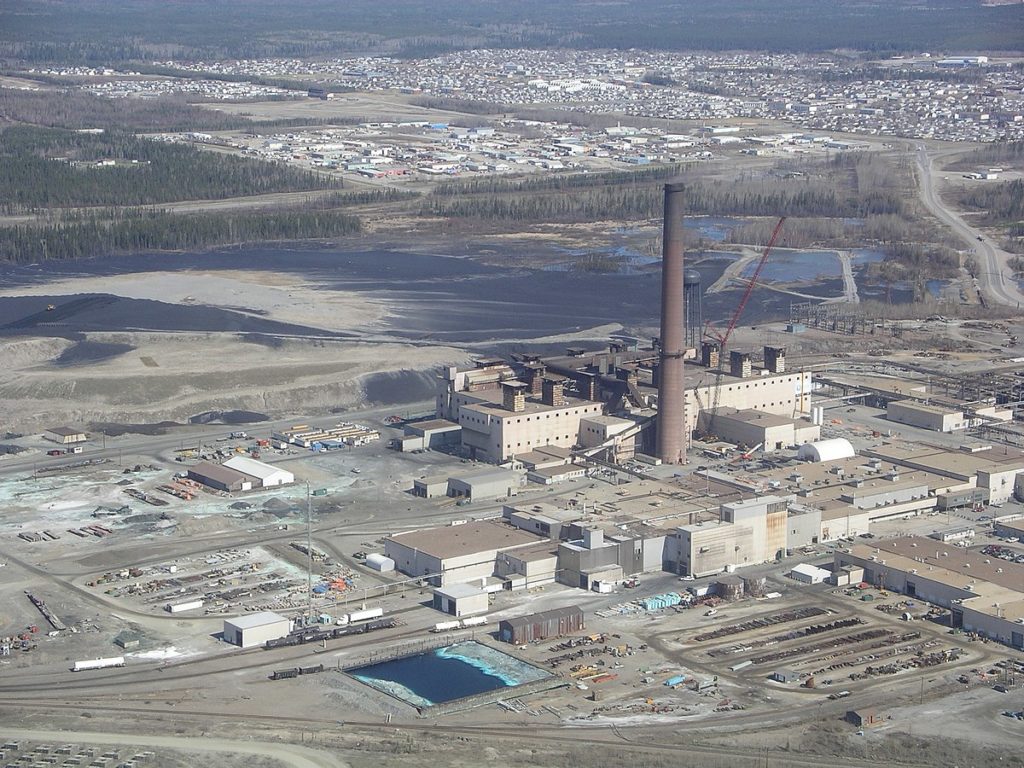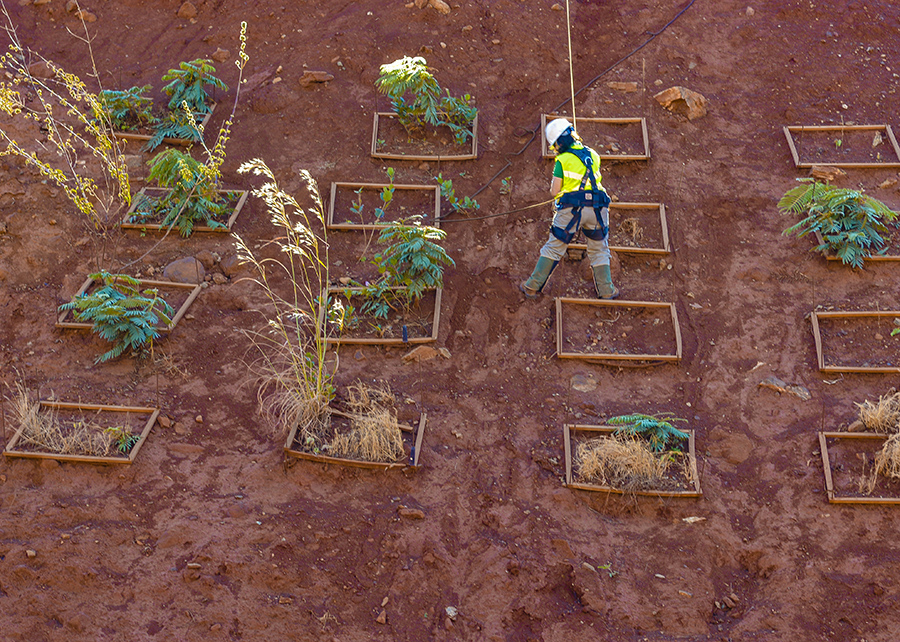Rock dust can remediate harmful nickel contamination
Researcher from EMBRAPA in Brazil checking on plots testing effects of nickel in soils.
Nickel contamination impacts our crops
By the year 2050, we need to grow 56% more food to feed the projected global population while simultaneously preserving our forests instead of turning them into fields for agriculture. The World Resources Institute has identified five solutions to this problem, one of which is to increase the production capabilities of our existing farmland (Ranganathan et al. 2018). This could be difficult due to nickel, which causes problems in soils around the world. Although nickel occurs naturally in soil, when it is above beneficial levels it reduces the productivity of crops and becomes nickel contamination (Hassan et al. 2019). This usually occurs due to human industrial activities such as mining (Jakubus and Graczyk 2020). A team of Polish scientists has found that simple rock dust application can remediate nickel contamination, improving plant productivity (Jakubowski et al. 2013).
Designing a rock dust study in Poland

The team designed a two-year microplot experiment in Baborówko in west-central Poland. Starting in 2007, they crafted concrete frames and filled them with acidic clay sand. These were then adjusted to four different levels of nickel content, applied as nickel sulfate: the first with natural content, the second with 100mg/kg of soil, the third with 150 mg/kg of soil, and finally the fourth with 270 mg/kg of soil. The team verified this nickel content by taking soil samples in 2010. They then either applied rock dust in the form of mostly granite with a low heavy metal content or did not treat the soil at all. With the plots now prepared with the right conditions for the experiment, in 2011 the team seeded reed canary grass and fertilized with conventional NPK fertilizer. They then harvested samples in 2011 and 2012 and analyzed them for nickel content.
Improving yields and reducing nickel contamination
By comparing canary grass yields of the plots with their different prepared soil conditions, the team concluded that rock dust application produces the best remediation effect when nickel contamination is around 150 mg/kg of soil, while it is not effective at higher levels.

In addition to yield, rock dust also reduces the amount of nickel in plants. This study found that the reed canary grass grown in the soil that was contaminated with nickel but not treated with rock dust had a nickel content in the aerial parts that was two times higher than the contaminated soil that was treated with rock dust. In the roots it was five times higher in the plants grown in the untreated contaminated soil.
Most dietary nickel comes from plant foods, particularly peas, spinach, asparagus, and oatmeal (Agency for Toxic Substances and Disease Registry 2005). While the average US American’s diet is within the tolerable upper intake limit for nickel (Agency for Toxic Substances and Disease Registry 2005), a European investigation found an excess in the diets of some toddlers, infants, and other children (Chain (CONTAM) et al. 2020). Rock dust application to soil with known nickel contamination could be beneficial for these vulnerable younger age groups.
Global benefits for 2050 goals

Greater yields from our existing fields is crucial in meeting our global goals of preventing hunger in our growing population. This Polish team’s research has demonstrated that rock dust application increases crop productivity in areas with moderate nickel contamination. This same application also reduces nickel content in the crops themselves, a move that may help protect children, infants and toddlers from an excess of dietary nickel. Two potentially wide-reaching benefits from a simple rock dust application.
Amanda Nevius is a nonfiction writer with 10 years of experience writing, editing, and proofreading educational and academic materials. She has a Master of Library and Information Science from Simmons College and a BA in History and English and American Literature from Brandeis University.
References
- Agency for Toxic Substances and Disease Registry (ATSDR). 2005. Toxicological profile for Nickel. Atlanta, GA: U.S. Department of Health and Human Services, Public Health Service.
- Chain (CONTAM), EFSA Panel on Contaminants in the Food, et al. “Update of the Risk Assessment of Nickel in Food and Drinking Water.” EFSA Journal, vol. 18, no. 11, 2020, p. e06268. Wiley Online Library, https://doi.org/10.2903/j.efsa.2020.6268.
- Jakubowski, Marek, Ewa Stanisławska-Glubiak, and Bernard Gałka. “The usefulness of the rock dust for the remediation of soils contaminated with nickel/Przydatność pyłu kamiennego do remediacji gleb zanieczyszczonych niklem.” Environmental Protection and Natural Resources/Ochrona Środowiska i Zasobów Naturalnych 24.2 (2013): 1-4.
- Jakubus, Monika, and Małgorzata Graczyk. “Availability of Nickel in Soil Evaluated by Various Chemical Extractants and Plant Accumulation.” Agronomy, vol. 10, no. 11, 11, Nov. 2020, p. 1805. www.mdpi.com, https://doi.org/10.3390/agronomy10111805.
- Ranganathan, Janet, et al. How to Sustainably Feed 10 Billion People by 2050, in 21 Charts. Dec. 2018. https://www.wri.org/insights/how-sustainably-feed-10-billion-people-2050-21-charts.
Support us on Patreon
Thank you for joining us today! Please become a member of RTE and support us on Patreon. Unlike many larger organizations, we work with a team of determined and passionate volunteers to get our message out. We aim to continue to increase the awareness of remineralization to initiate projects across the globe that remineralize soils, grow nutrient dense food, regenerate our forests’ and stabilize the climate – with your help! If you can, please support us on a monthly basis from just $2, rest assured that you are making a big impact every single month in support of our mission. Thank you!








Got something to say?